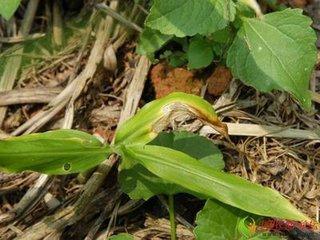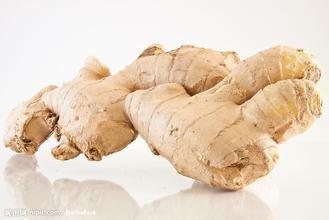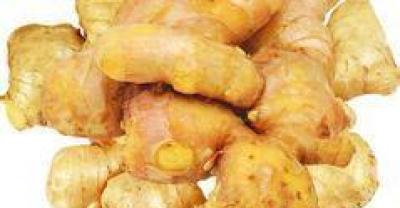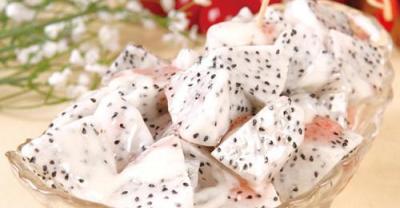Control techniques of Diseases and insect pests in Ginger planting
Ginger will encounter a variety of diseases and insect pests in the process of planting, how to better control diseases and insect pests, improve ginger production and increase farmers' income is very important at present; especially in line with the spirit of the Central Committee No. 1 document, to promote the pace of agricultural supply-side reform, it is necessary to constantly improve the living standards of farmers. Therefore, this section is about the pest control techniques in the process of ginger planting.

1. Ginger rot
Ginger rot is still common in the process of planting, especially in the field. And ginger rot is a destructive disease in ginger planting. If ginger rot occurs, the output of ginger will generally be reduced by 10% to 20%, or even more than 50% in serious cases, and some will lose harvest, which poses a serious threat to the cultivation of ginger and is a major factor restricting the development of ginger.
The symptoms of ① and ginger rot disease: the occurrence of ginger rot disease does not distinguish between parts, and can be damaged in the roots, stems and leaves of ginger. But the pathogen usually infects and harms the aboveground stem base and rhizome first. And at the beginning of the disease, the leaves of ginger begin to curl, droop and have no luster. Slowly, the leaves became withered and yellow from bottom to top, the base of the diseased plant became dark purple and then turned yellowish brown in water, and then the rhizome became soft and rotten.
Prevention and control methods of ② and ginger rot: comprehensive control measures should be implemented for the prevention and control of ginger rot, with emphasis on agricultural control, supplemented by chemical control. It is necessary to cut off the route of transmission and control the occurrence and spread of the disease as much as possible. Specifically achieve the following points.
The main results are as follows: (1) when choosing ginger species, we should realize that it is best to choose to leave seeds in disease-free fields or select disease-free ginger seeds, so that the occurrence of the disease can be prevented from the source.
(2) the rotation and stubble system should be strictly implemented in the cultivation of ginger, and it is best to keep the interval between 5 and 7 years, and the ginger should not be planted continuously in one field.
(3) select the land with high topography and good drainage, and apply 35kg lime per mu for soil disinfection after deep ploughing, the ground should be flat during soil preparation, and the ginger ditch should not be too long, so as to prevent poor drainage and stagnant water in the field, causing diseases.
(4) in the growing period of ginger, we should pay special attention to drainage, control the times of irrigation, increase the application of phosphorus and potassium fertilizer and organic fertilizer, especially the beneficial microorganisms which have antagonistic effect on bacteria, so as to topdressing in time.
(5) Pesticide control: at the initial stage of ginger rot disease, Bisheng (thiazolyl zinc) 500 times solution was used to irrigate the root, 0.5 kg per plant for 2 times continuously. You can also choose 20% thiosen copper suspension 300 times 500 times or 20% folazole wettable powder 400 times or 50% chlorobromoisocyanuric acid water soluble powder 1000 times. The first infusion should be 10 days before the onset of the disease, and then once every 10 days for a total of 4 or 5 times.

2. Anthracnose of ginger
①, symptoms of ginger anthracnose: the disease of ginger anthracnose mainly lies in the leaves of ginger. Water-stained brown spots appear from the leaf tip and leaf edge, and then expand downward and inward into several oval or prismatic brown spots with halo lines on the surface. The disease spot is connected with the synthetic plaque, which makes the leaves brown and dry, and small black spots appear when the spots are wet.
The prevention and control methods of ② and ginger anthracnose: the comprehensive control measures of ginger anthracnose should be taken mainly to strengthen cutting culture and control measures, combined with spray protection. The specific methods are as follows:
The main results are as follows: (1) the source of bacteria should be reduced in the process of ginger planting, and the source of infection can be effectively reduced by thoroughly cleaning the countryside and turning the soil deeply.
(2) Ginger should be planted in high border and furrow as far as possible, apply high-quality organic base fertilizer before planting, flatten the border surface, cultivate soil in time, remove weeds and reduce field humidity, and appropriately increase the application of phosphorus and potassium fertilizer.
(3) spray protection: at the initial stage of the disease, you can choose Kailun (pyrazolyl carbendazim) or 20% prochloraz EC 800 times, spray once in 10-15 days, 2-3 times in a row.
Ginger spot disease
Symptoms of ① and ginger spot disease: the main harm of ginger spot disease is still leaves. Leaves yellow-white, fusiform or oblong, small, 2-5 mm long, thinning in the middle of the spot, prone to rupture or perforation. In severe cases, the disease spots are scattered, and the whole leaves seem to be dotted. The needle-shaped conidium can be seen in all the diseases.
The control methods of ② and ginger spot disease: ginger spot disease should be strengthened and improved cultivation control measures, combined with comprehensive control measures of spraying protection. The specific technical methods adopted are:
The main results are as follows: (1) continuous cropping is emphasized in the cultivation of ginger, and the work of clearing the garden should be done thoroughly and continuous cropping should be avoided before sowing. The effect of rotation with rice is better.
(2) Ginger must be fertilized by soil preparation before planting, combined with soil preparation, high-quality organic fertilizer should be applied, and the border surface should be leveled to facilitate irrigation and drainage, so as to avoid single or excessive application of available nitrogen fertilizer, and proper application of phosphorus and potassium fertilizer can enhance resistance.
(3) timely spray protection in the growth process of ginger: at the initial stage of the disease, you can choose to spray 68% fine nail cream ● manganese zinc water dispersible granules, spray once every 7 to 10 days, spray 3 times continuously for 5 times.

Ginger borer
Disease symptoms of ① and ginger borer: ginger borer harms the main pests of ginger. It bites the tender stem with larvae, and then drills into the stem to continue the damage. After the ginger borer bites the ginger plant, the stem is hollow, the transport of water and nutrients is blocked, the upper leaves of ginger seedlings wither and wither, and the stem is easy to break.
②, prevention and control methods:
(1) cleaning up the round fields: after the ginger is harvested, the broken plants, withered leaves, pest seedlings and weeds of the ginger are cleared and burned centrally.
(2) artificial capture: when the seedlings are found to be killed, the insect mouth is found and the larvae can be caught by peeling off the stem.
(3) Chemical control: spraying 1000 times of chlorpyrifos EC on leaves, or 3000 times of 20% Rongge or 3000 times of Kangkang width, etc.
5. Beet armyworm
Symptoms of ① and Spodoptera exigua: newly hatched larvae gather on the back of leaves, spin silk to form a net, feed on mesophyll and residual epidermis. After the 3rd instar, the leaves are eaten into holes or holes.
②, prevention and control methods:
(1) trapping and killing adults with black light or frequency vibrating insecticidal lamps can also be caught manually in the morning or evening, but it is time-consuming and tiring.
(2) it is also a good measure to set up an anti-insect net in the whole field to avoid its harm. For the single control of beet armyworm, the control effect can be achieved by selecting a 20-mesh pest control net. If multiple pests are to be controlled at the same time, it is best to choose a 30-40 mesh pest control net.
(3) the skin of beet armyworm larvae is thick and smooth, the pesticide is not easy to invade, and the general pesticide control effect is poor. It can be sprayed with 1000 times of chlorpyrifos EC, or 3000 times of 20% Rongge or 20% Miman suspension, once every 7 days and 2 times in a row.
The prevention and control of diseases and insect pests of ginger should be considered from the selection of ginger, and the initial growth cycle and growth period of ginger should be considered comprehensively, so that the high yield and quality of ginger can be achieved and the income of farmers can be improved.

- Prev

Pest Control in the process of Sweet Potato planting
At present, farmers' enthusiasm for planting sweet potatoes is generally high, but in the process of planting sweet potatoes, like other crops, they will encounter a variety of diseases and insect pests.
- Next

Problems and Countermeasures of Citrus planting
In 2016, the planting area of citrus in China reached 2.5567 million hm and the total output was 36.168 million tons.
Related
- Fuxing push coffee new agricultural production and marketing class: lack of small-scale processing plants
- Jujube rice field leisure farm deep ploughing Yilan for five years to create a space for organic food and play
- Nongyu Farm-A trial of organic papaya for brave women with advanced technology
- Four points for attention in the prevention and control of diseases and insect pests of edible fungi
- How to add nutrient solution to Edible Fungi
- Is there any good way to control edible fungus mites?
- Open Inoculation Technology of Edible Fungi
- Is there any clever way to use fertilizer for edible fungus in winter?
- What agents are used to kill the pathogens of edible fungi in the mushroom shed?
- Rapid drying of Edible Fungi

